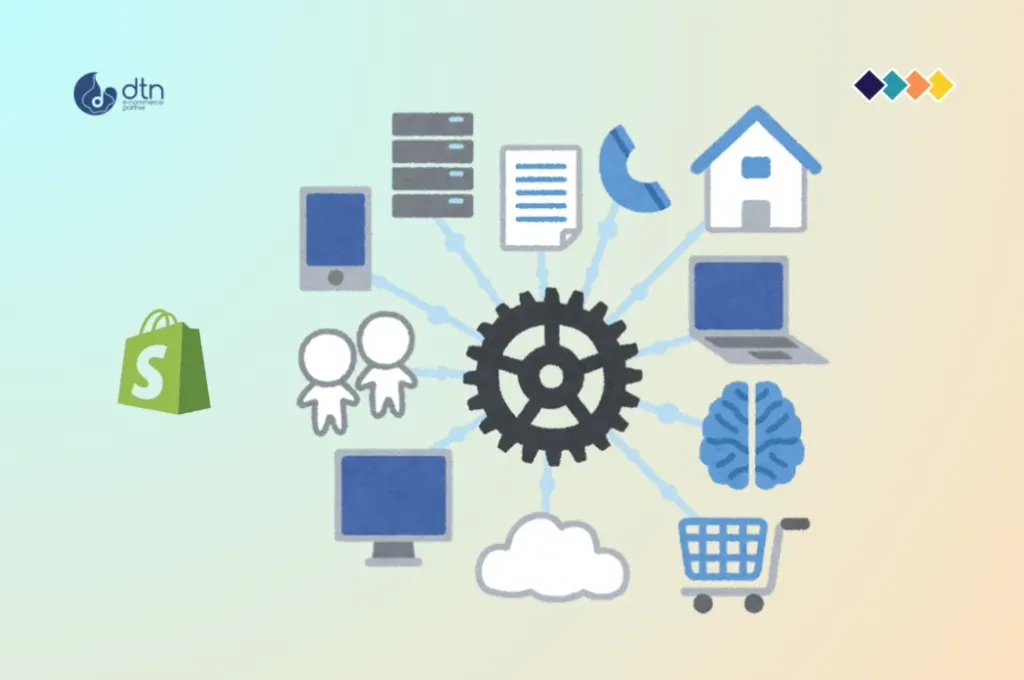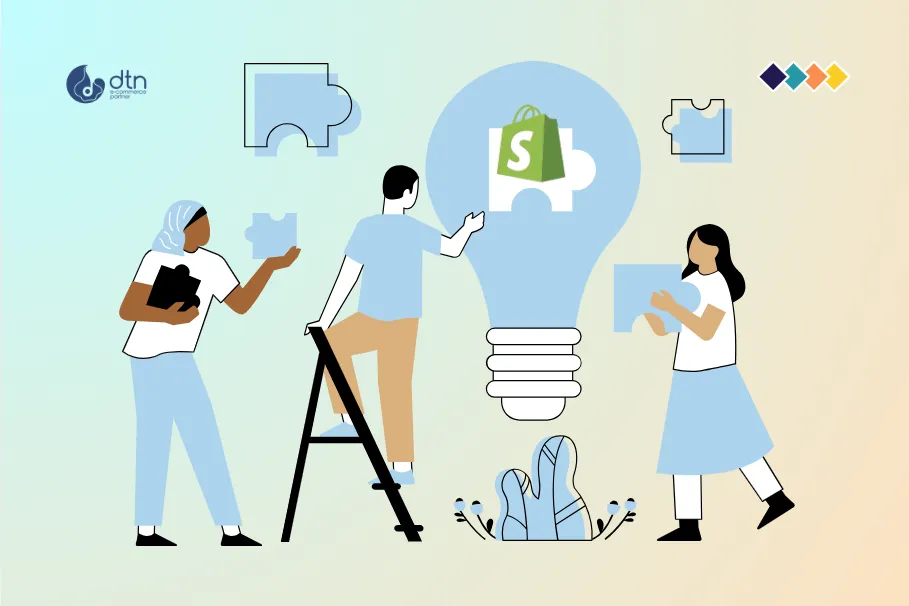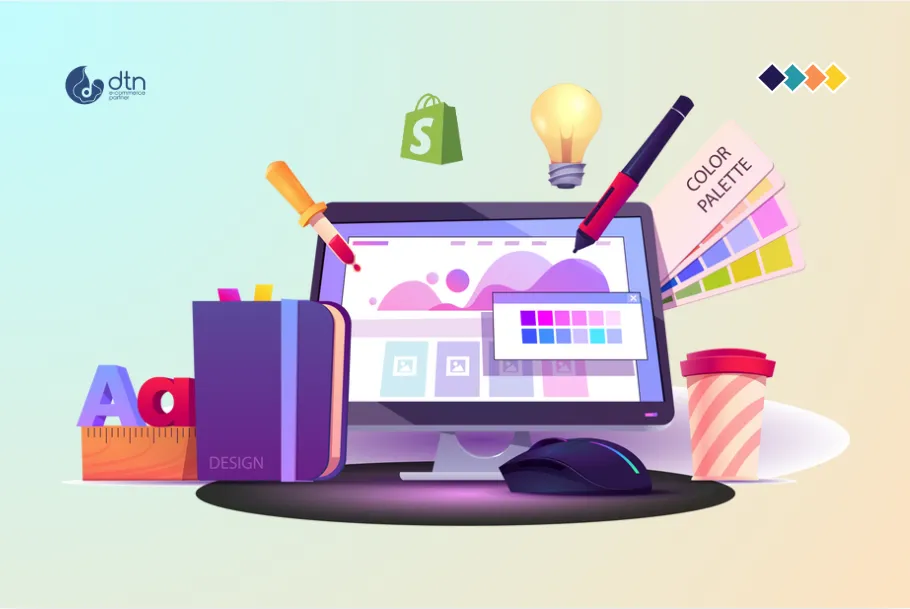Ever wondered why some Shopify stores feel like a breeze to shop on, while others leave you frustrated and clicking away? It’s all in the design. In a world where e-commerce sales are exploding to over US$3.66 trillion this year (Statista.com, 2025), smart Shopify design tips can be the difference between a thriving shop and one that gathers digital dust. This guide shares proven strategies to make your store visually stunning, user-friendly, and sales-focused. Drawing from top-performing stores and expert insights, we’ll cover everything from themes to mobile tweaks. Whether you’re a solo entrepreneur or leading a marketing team, these tips will help you build a Shopify store that hooks customers and boosts your bottom line.
The Power of Smart Shopify Design
Great design isn’t about flashy graphics—it’s about guiding shoppers seamlessly from landing page to checkout. Poor layouts can spike cart abandonment to 70% or more (Baymard.com, 2024), but thoughtful tweaks often lift conversions by double digits (Checkout.com, 2024). Shopify’s drag-and-drop editor makes it beginner-friendly, but success comes from blending your brand with user psychology. Think fast loads, intuitive navigation, and trust signals. Ready to level up? Let’s dive into actionable Shopify design tips, inspired by high-converting stores like Allbirds and Gymshark.
Tip 1: Anchor Everything in Your Brand Story
Start with the soul of your shop. Ask: What makes your brand tick? A fitness brand might go for energetic reds and bold fonts to pump up motivation, while a luxury candle maker opts for soft neutrals and elegant scripts to evoke calm.
Why it works: Customers connect with authenticity. A mismatched design can be off-putting, but one that mirrors your story can build loyalty.
Quick win: Audit your logo, colours, and messaging. Use Shopify’s theme customiser to apply a consistent palette—limit to 3-4 colours for cohesion. Pro tip: Tools like Coolors can generate palettes that align with your vibe.
Take Glossier: Their minimalist, pink-hued design screams approachable beauty, turning a simple site into a cult favourite.

Tip 2: Hunt for the Perfect Theme—But Don’t Settle
Shopify’s theme library is a goldmine, but not all shine. Look beyond aesthetics: Does it load under 3 seconds? Support product variants? Integrate with your apps?
Step-by-step selection:
- Filter for “free” or “paid” based on budget—paid themes like Debutify often pack more features.
- Preview on mobile; 73% of traffic is phone-based (TekRevol.com, 2025).
- Test customisation: Can you tweak sections without code?
Common pitfall: Overloading with features. A clean theme like Dawn keeps things speedy, avoiding the bloat that slows sites.
Gymshark nailed this with a bold, video-heavy theme that showcases workouts, making their store feel dynamic and engaging.

Tip 3: Turn Your Homepage into a Conversion Machine
Your homepage isn’t a brochure—it’s a sales pitch. Ditch the generic slider; focus on what sells.
Key elements to nail:
- Hero section: A striking image or video with a one-line hook, like “Sustainable Fashion for Everyday Adventures,” paired with a “Shop Now” button.
- Featured collections: Grid your top sellers with hover effects for quick views.
- Social proof: Embed recent reviews or “10,000+ Happy Customers” to build instant trust.
Pro insight: Use Shopify’s sections to A/B test—swap a static banner for a user-generated content feed and watch engagement soar.
Allbirds’ homepage does this masterfully: Clean product grids with eco-stats front and centre, guiding eco-shoppers straight to checkout.
Tip 4: Streamline Navigation Without the Clutter
Confusing menus kill sales. Aim for “three-click rule”: Customers should reach any product in three taps or fewer.
Build it right:
- Mega menus: Use drop-downs for subcategories, limiting top-level items to 7 or fewer.
- Search supremacy: Add predictive search (via apps like Searchanise) to suggest as they type.
- Footer links: Offload secondary pages like “About Us” here to declutter the header.
Warning: Avoid deep hierarchies. If your shop has 500+ products, use collections and tags for smart filtering.
MVMT watches keep navigation crisp with a sticky header and category icons, making high-end timepieces a breeze to browse.

Tip 5: Master Visuals That Sell, Not Just Show
Photos and videos aren’t extras—they’re your silent salespeople. Bland images can lead to tank conversions, while vibrant ones can double click-throughs.
Elevate your game:
- Product shots: 360-degree views or lifestyle images (e.g., a backpack on a hike). Use Shopify’s built-in zoom.
- Alt text magic: Add descriptive alt tags like “red leather handbag side view” for SEO and accessibility.
- Video integration: Embed short clips via Shopify’s video section—show a gadget in action.
AI twist: Use tools like Remove.bg for quick background cuts or Canva’s AI for mockups, saving hours.
Warby Parker’s virtual try-on videos make eyewear shopping fun, turning hesitation into confident buys.
Tip 6: Go Mobile-First or Get Left Behind
Desktop design is old news—mobile is where sales happen. A non-responsive store loses 50% of its potential revenue.
Essential tweaks:
- Touch-optimised: Buttons at least 44×44 pixels for easy taps.
- Condensed layouts: Stack sections vertically; hide non-essentials in a hamburger menu.
- Speed hacks: Lazy-load images below the fold to cut initial load time.
Test it: Shopify’s preview mode is excellent, but use Google’s Mobile-Friendly Test for real feedback.
Nike’s mobile site feels like an app: Swipeable carousels and one-tap add-to-cart keep runners shopping mid-jog.

Tip 7: Build Trust and Smooth the User Journey
Design for emotion: Make shoppers feel safe and excited.
Trust boosters:
- Security signals: SSL badge and “Protected by Shopify” notices.
- Progress indicators: Checkout bars showing “Cart > Shipping > Payment.”
- Personal touches: AI-powered recommendations like “Customers also bought” via apps such as ReConvert.
UX hack: Reduce steps—enable guest checkout to slash abandonment.
Everlane’s transparent pricing and “Ethical Materials” badges on every page foster trust, leading to higher average orders.
Tip 8: Leverage AI and Analytics for Smarter Design
Don’t guess—let data drive your tweaks. Shopify’s dashboard is a treasure trove.
Get started:
- Heatmaps: Apps like Hotjar show where users click (or rage-quit).
- AI personalisation: Use Shopify Magic for auto-generated descriptions or layout suggestions.
- Iterate weekly: Track metrics like time on page; if under 30 seconds, simplify.
Case in point: A beauty retailer used analytics to move reviews above the fold, spiking conversions by 25%.
Sephora’s AI “Colour IQ” tool personalises shade matches, making their design feel intuitive and innovative.
Hands-On Ways to Apply These Tips
- Budget hack: Start with a free theme like Sense, then invest £100-200 in custom apps for polish.
- Quick audit: Spend 30 minutes walking through your store as a stranger—what frustrates you?
- Trend alert: Incorporate micro-animations (e.g., subtle button hovers) for delight without slowing loads.
- Scale smart: For growing shops, migrate to Shopify Plus for advanced customisation.
Pair these with our multi-currency guide for global appeal.

Q&A: Quick Answers to Shopify Design Tips
What are the best Shopify design tips for beginners?
Focus on mobile responsiveness, simple navigation, and high-quality images to keep things user-friendly (Shopify.com, 2024).
How can Shopify design tips improve conversions?
By reducing friction—like fast loads and clear CTAs—they cut abandonment and guide shoppers to buy (Checkout.com, 2024).
Which Shopify theme design tips should I follow?
Choose fast, customisable themes with built-in mobile support and essential features like filters.
Are there Shopify design tips for visual appeal?
Yes—use cohesive colours, zoomable photos, and short videos to make products irresistible.
How do I test my Shopify store design?
Use A/B testing, analytics, and user feedback to refine layouts and boost performance (Worldpay.com, 2024).
Wrap-Up: Put These Shopify Design Tips to Work
These Shopify design tips aren’t just theory—they’re battle-tested ways to make your store a conversion powerhouse in 2025’s e-commerce boom (Statista.com, 2025). From brand-aligned themes to AI-driven tweaks, focus on what delights users and drives sales. Your design is your silent salesperson; make it count.
Ready to transform your shop? Audit your current setup, apply one tip today, and track the results. Reach out to our e-commerce specialists for hands-on help. Let’s design a store that sells.
References
- Statista.com, 2025: https://www.statista.com/outlook/emo/ecommerce/worldwide
- Shopify.com, 2024: https://www.shopify.com/enterprise/blog/global-ecommerce-statistics
- Checkout.com, 2024: https://www.checkout.com/resources/payment-security
- Worldpay.com, 2024: https://www.worldpay.com/en/insights-hub/article/global-payments-report
- Baymard.com, 2024: https://baymard.com/lists/cart-abandonment-rate
- TekRevol.com, 2025: https://www.tekrevol.com/blogs/mobile-device-website-traffic-statistics/
- Stripe.com, 2024: https://stripe.com/resources/more/global-payments







